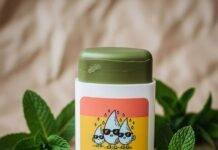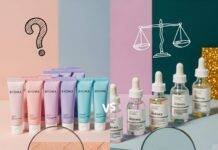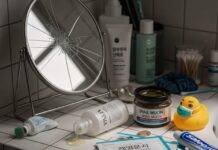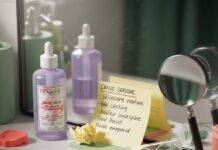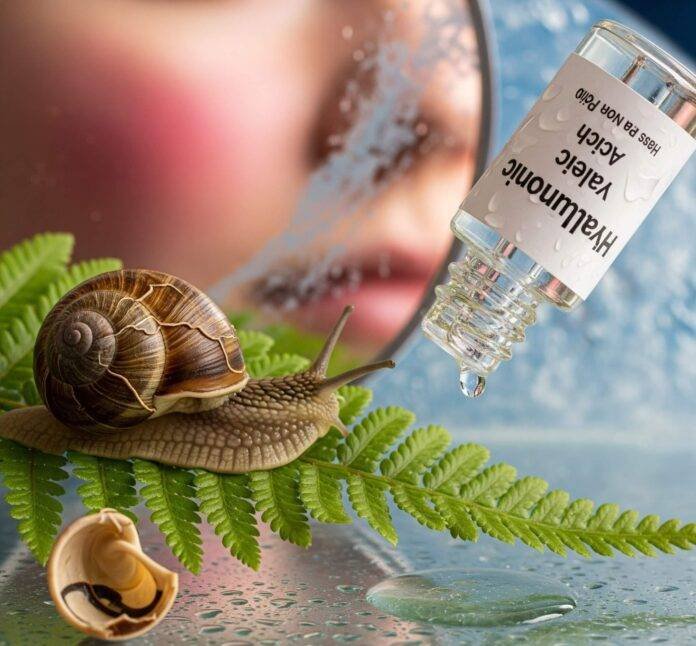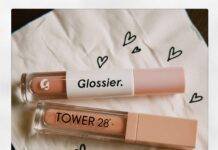Snail mucin vs hyaluronic acid—y’all, I’m knee-deep in this skincare mess, and my face is the guinea pig. I’m typing this in my cramped Portland apartment, rain pelting the window like it’s mad at me, and my desk is littered with empty coffee cups and a snail mucin jar that’s, uh, suspiciously sticky. Like, how did I go from washing my face with bar soap to debating snail goo vs fancy water molecules? Anyway, I’ve been slathering both snail mucin and hyaluronic acid on my face for months, and let me tell you, it’s been a ride. My skin’s oily in the T-zone, dry on the cheeks, and throws tantrums when I’m stressed—like last week when I spilled coffee on my laptop. Here’s my raw, slightly embarrassing take, typos and all, from one flawed human in the PNW.
Last month, I was wandering a Walgreens in Portland, probably looking like I needed a map, staring at skincare shelves. I grabbed a snail mucin gel ‘cause I saw some influencer on X raving about it . Then I snagged a hyaluronic acid serum ‘cause it sounded like something a dermatologist would approve. My skin’s been a drama queen lately, and I’m just trying to keep it from staging a full revolt. I’ve got this cringey memory of putting on snail mucin before a FaceTime with my mom, and she was like, “Why’s your face so… shiny?” Yeah, Mom, it’s snail slime. Let’s dive in.
What’s the Deal with Snail Mucin, Anyway?
My Goopy Love Affair with Snail Slime
Snail mucin—okay, it’s basically the slime snails leave behind when they’re just living their best lives. Gross? Totally. But I read on Vogue’s K-beauty guide that it’s got hyaluronic acid (yep, the other guy), plus stuff like glycoproteins that hydrate and heal. I was sold. First time I tried it, I was in my bathroom, the Portland fog creeping in through a cracked window, and I scooped out this slick, stringy goo. It felt like rubbing melted gummy bears on my face, but weirdly nice? After a week, my dry patches were less angry, and that red spot from a zit I popped (don’t judge) was fading.
But here’s where I messed up: I went overboard one night, slathered on too much snail mucin, and my pillow looked like a crime scene of shiny goo. My cat, Pickles, gave me this judgy side-eye, like, “Dude, get it together.” Snail mucin’s awesome for hydration and calming redness, but less is more, trust me.
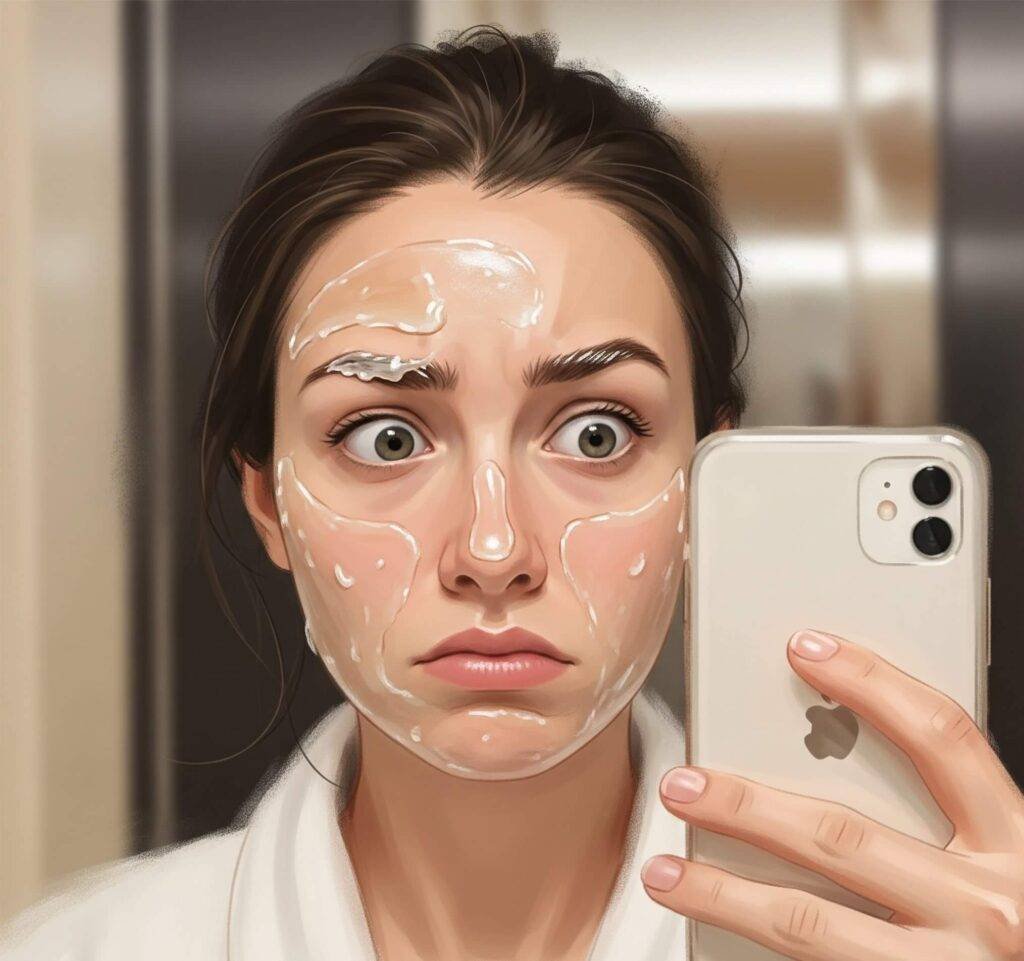
Hyaluronic Acid: The Hydration Hype Machine
My Flaky Fumbles with Hyaluronic Acid
Hyaluronic acid sounds like it belongs in a chemistry class, not my skincare routine. It’s this molecule that sucks in water like a sponge—WebMD says it holds 1,000 times its weight—which is why my dry cheeks were begging for it. I started using it after a windy day in Portland left my face feeling like sandpaper. I’m talking flakes so bad I looked like I was molting. I was on my couch, Pickles shedding fur on my lap, when I first tried a hyaluronic acid serum. Felt like a scientist, dropping it on my face like it was a big deal.
Big mistake: I didn’t know you’re supposed to put it on damp skin. I slathered it on dry, in my dry apartment, and my face felt tighter. Like, what? Turns out, hyaluronic acid can yoink moisture from your skin if it’s got nothing else to grab . Once I got the hang of it—damp face, then moisturizer—it’s been a game-changer for keeping my skin plump. But it doesn’t do much for my redness or old acne marks, which is where snail mucin’s been sneaking ahead.
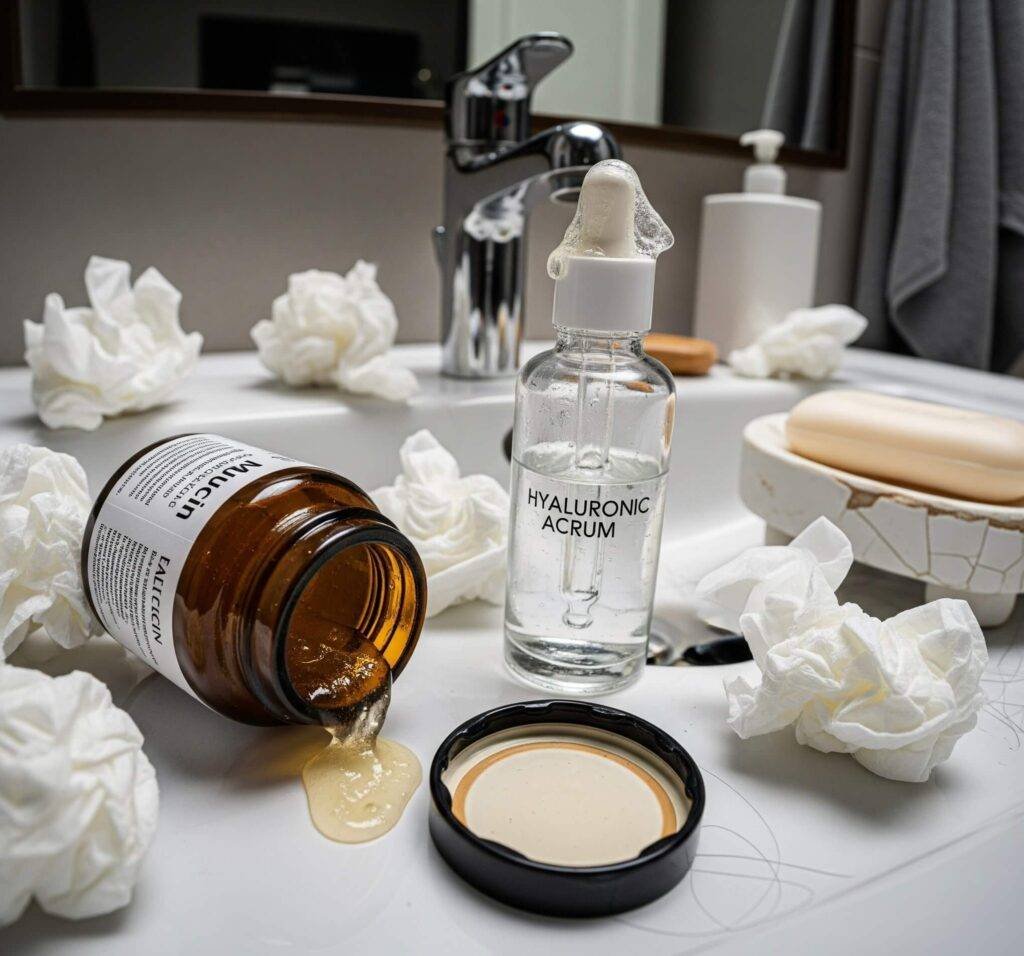
Snail Mucin vs Hyaluronic Acid: My Chaotic Face-Off
Which One’s Saving My Skin (or Not)?
Alright, let’s get real: snail mucin vs hyaluronic acid is like choosing between coffee and tea—I want both, but they do different things. Snail mucin’s like that weirdly talented friend who’s good at everything: hydrates, soothes my red cheeks, and even helps with old scars. Hyaluronic acid? It’s the dependable pal who’s laser-focused on keeping my face hydrated. Here’s my sloppy, human take on the showdown:
- Hydration: Hyaluronic acid’s the king of moisture, especially in Portland’s humid air. Snail mucin hydrates too, but it’s more about that all-over glowy vibe.
- Texture: Snail mucin’s slimy, and I’m weirdly into it now. Hyaluronic acid’s lighter but can get sticky if I’m not careful.
- Bonus Points: Snail mucin’s got healing powers for redness and scars. Hyaluronic acid’s like, “Here’s water, figure out the rest.”
- Ease of Use: Snail mucin’s chill—just slap it on. Hyaluronic acid needs damp skin and a moisturizer, or it’s a flop.
Yesterday, I was at a Portland coffee shop, face glowing from snail mucin, when a barista asked what I was using. I mumbled “snail slime” and immediately regretted it. Hyaluronic acid’s my morning go-to when I’m rushing out the door, but snail mucin’s my nighttime jam. I’m kinda obsessed with both, and I’m not sorry.
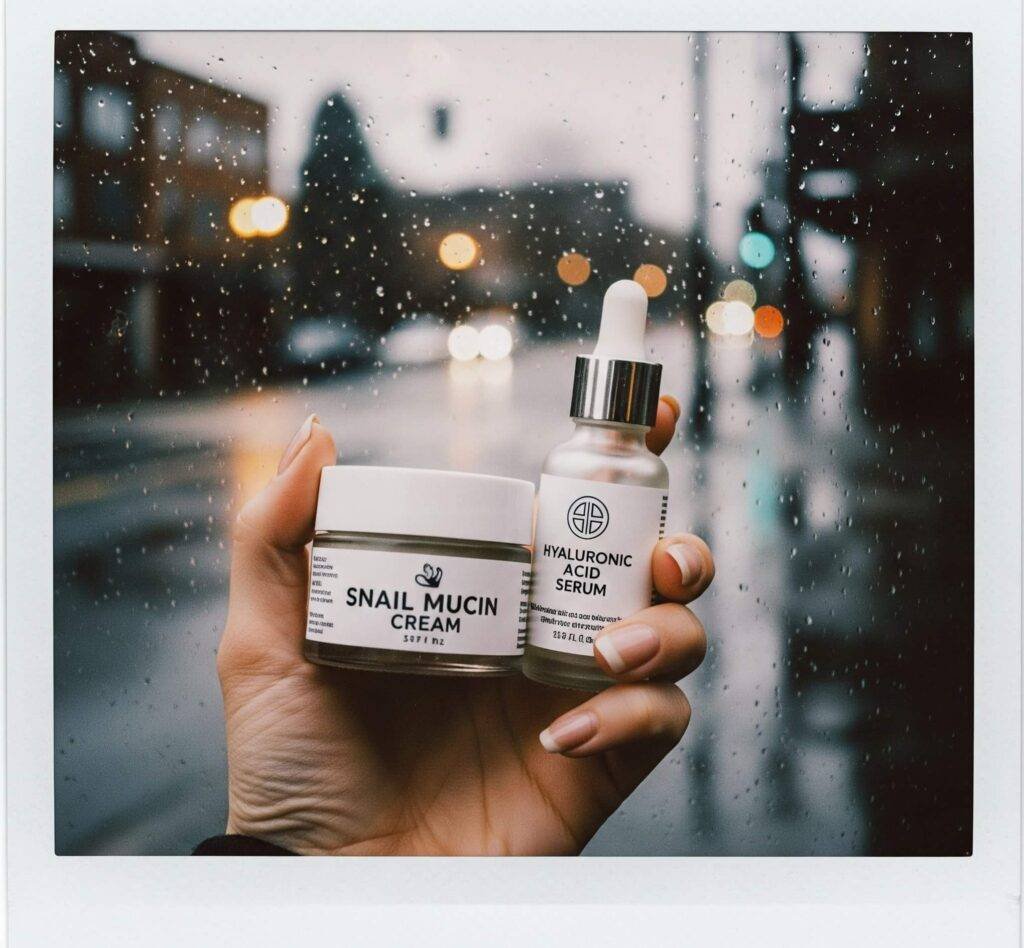
My Hot Mess Tips for Snail Mucin and Hyaluronic Acid
Stuff I Wish I Knew Before I Started
I’m no expert, but here’s what I’ve learned from my snail mucin vs hyaluronic acid disasters:
- Go Easy: Too much snail mucin makes you look like a glazed donut. A tiny bit does the trick.
- Layer Like a Pro: Hyaluronic acid on damp skin, then lock it with moisturizer. Snail mucin can go on anytime, but I like it at night.
- Mix It Up: I layer hyaluronic acid first, then snail mucin. My skin’s like, “Yo, thanks for the spa day.”
- Patch Test, Duh: I skipped this and got a tiny rash from snail mucin. Test it on your arm first.
Byrdie’s layering guide saved me when I was clueless. Also, I once spelled “hyaluronic” wrong in a group chat, and my friends roasted me for days. Humans, right?
Wrapping Up My Snail Mucin vs Hyaluronic Acid Drama
So, snail mucin vs hyaluronic acid? I’m not picking a side ‘cause my skin loves both, flaws and all. Snail mucin’s my MVP for calming redness and giving me that K-beauty glow, while hyaluronic acid keeps my face from turning into a desert. Grab a snail mucin gel (Cosrx is my jam) and a cheap hyaluronic acid serum (The Ordinary’s solid) and play around. Mess up like I did, laugh it off, and see what your skin vibes with. Got a fave? Spill in the comments—I’m dying to know if you’re team snail goo or hyaluronic acid. Or, like me, are you just a skincare nerd fumbling through life?






